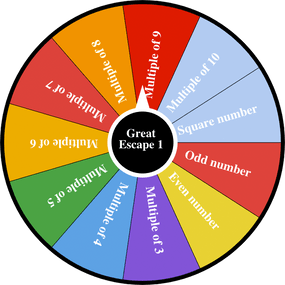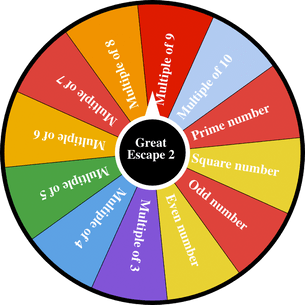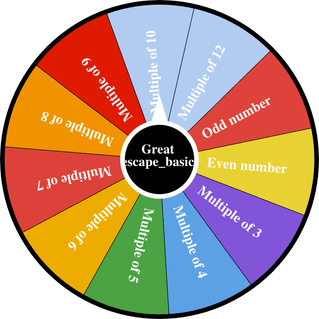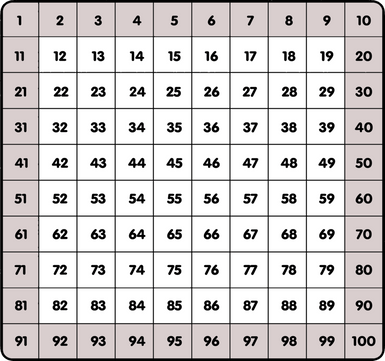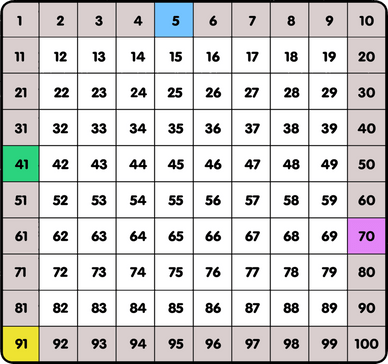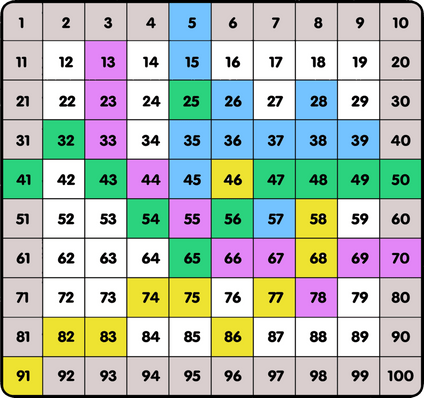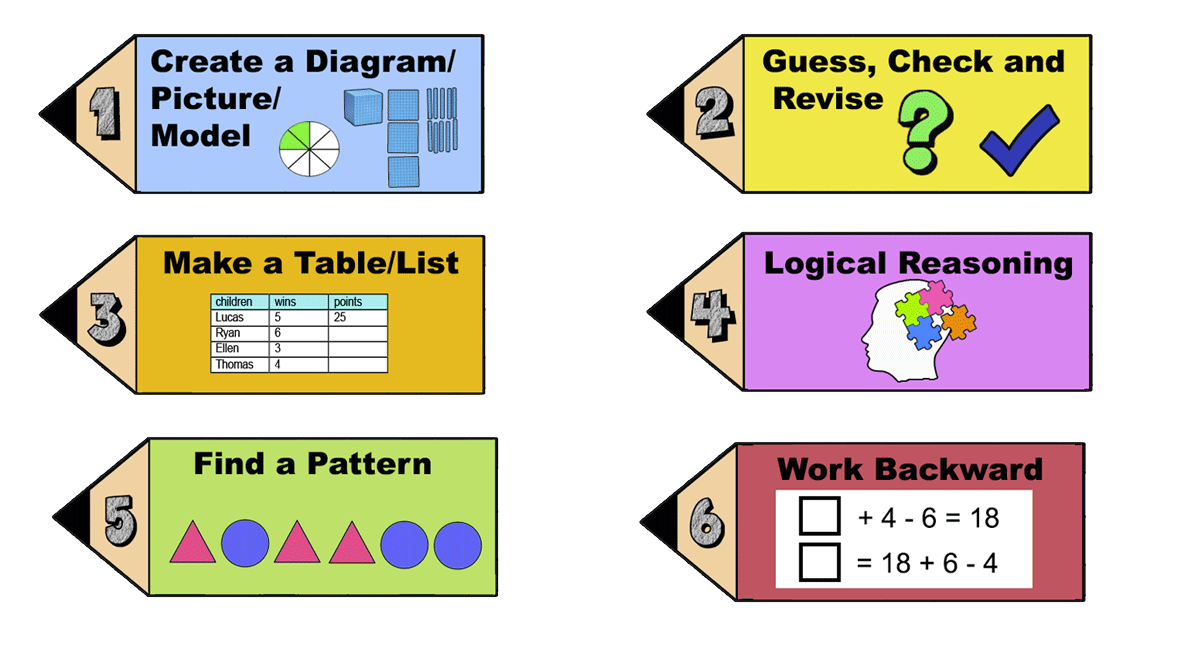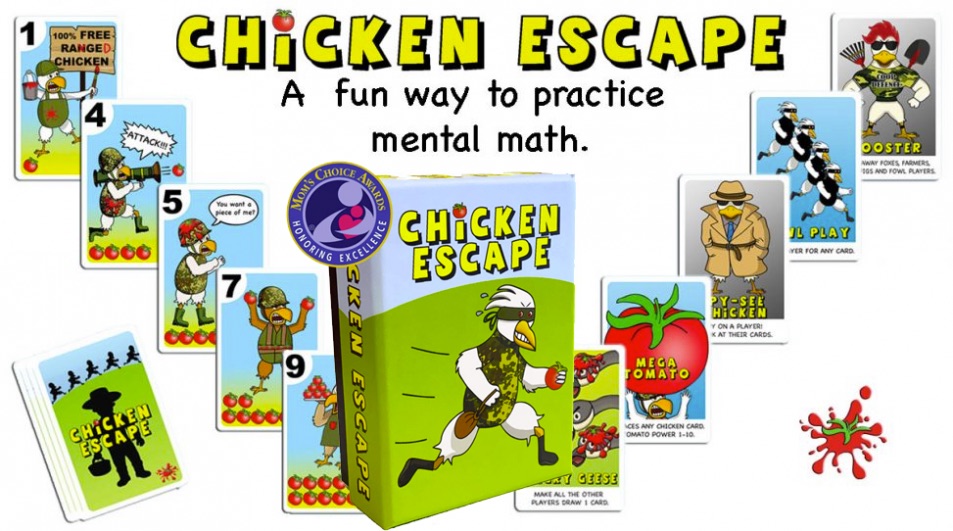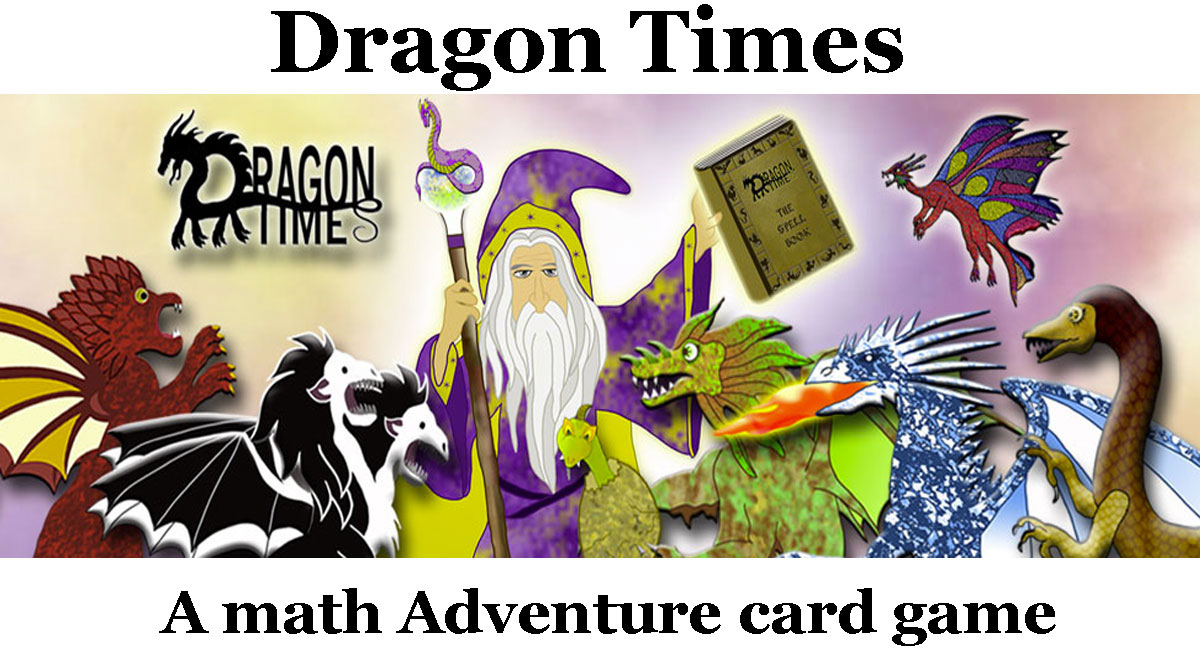With “The Great Escape” the players can practice multiplication facts, recognizing square numbers, and prime numbers. Four levels available. It is a great way to initiate conversations and explain about square numbers, and prime numbers if the students are not familiar with them already. The game is recommended for ages 8 and up. It is a low-floor high ceiling game of luck and strategy. The Great Escape is played on the multiplication table or the1 -100 table. Four different tables are provided.
If you are teaching remotely at the end of the post along with the print version you will find the google slides version that uses spinners instead of dice or cards.
Check out the Great escape addition! and Block it! another print and digital game to practice multiplication.
Materials
- Given print out or your own 1-100 table.
- 12 face dice learn how to build your own here or a deck of playing cards. (or you can print and use the spinner)
- Coloring pencils, (different color for each player.)

Instead of dice or cards you can print and use the spinners used in the google slides version, just paste the spinner on card stock and buy a plastic spinner Here is a video of how you can make a spinner with a wire , or a paper clip. You can also use the digital one from the google slides version. Keep in mind that there are two different spinners. Download the spinner with the tables at the end.
Goal
The goal of the game is to color a path from one side of the table to the other. That is your escape path through the maze. The tiles must connect on one side or corner for the path to be complete. You don’t have to color a connected tile every time, but to win you must have one connected path. For a more challenging and longer game you can decide that the tiles will connect only on the sides (not corners).
You color one square in each turn based on the dice roll.
- If you roll 1 you must color an odd number.
- If you roll 2 you must color an even number.
- If you roll 3 you must color a multiple of 3.
- If you roll 4 you must color a multiple of 4.
- If you roll 5 you must color a multiple of 5.
- If you roll 6 you must color a multiple of 6
- If you roll 7 you must color a multiple of 7.
- If you roll 8 you must color a multiple of 8.
- If you roll 9 you must color a multiple of 9.
- If you roll 10 you must color a multiple of 10.
- If you roll 11 you must color a prime number.
- If you roll 12 you must color a square number. (of course 12 is not a square number but is our last option on the dice)
If you don’t have a 12 face dice learn how to build your own here. You can also use playing cards instead of dice. Create a deck with the numbers 1-10 ( repeated 4 times ) and the kings and queens. Shuffle them well and keep the deck facedown. Instead of rolling the dice, the players draw a card at their turn. Numbers work the same as with the dice roll the king could be 11 and the queen could be 12.
To enter the maze the players take turns rolling the dice ( or picking a card) and choose a number based on their roll from the 4 outer sides of the table. That is their entry point. To escape they have to reach the opposite side.
The players try to block each others way by choosing to color squares that will block the opponent.
The first player to escape is the winner.
I chose to use the 1-100 table because with that we can have prime numbers as one of the options and finding the multiples is more challenging. If you would like to practice only multiplication facts then you can use the file with the multiplication table 12X12. Then rolls 11 and 12 can be multiples of 11 and 12.
Print Version
I have uploaded 4 different files./tables for different difficulty levels.
1.Using the 1-100 table with the square and prime numbers marked with squares and circles to help the players identify them.
2. Using the 1-100 table with only the prime numbers marked with circles.
3.Using the 1-100 table without any markings.
4. Using the 12×12 times table.
Get the free Google slides version
We hope that you find this game useful.
